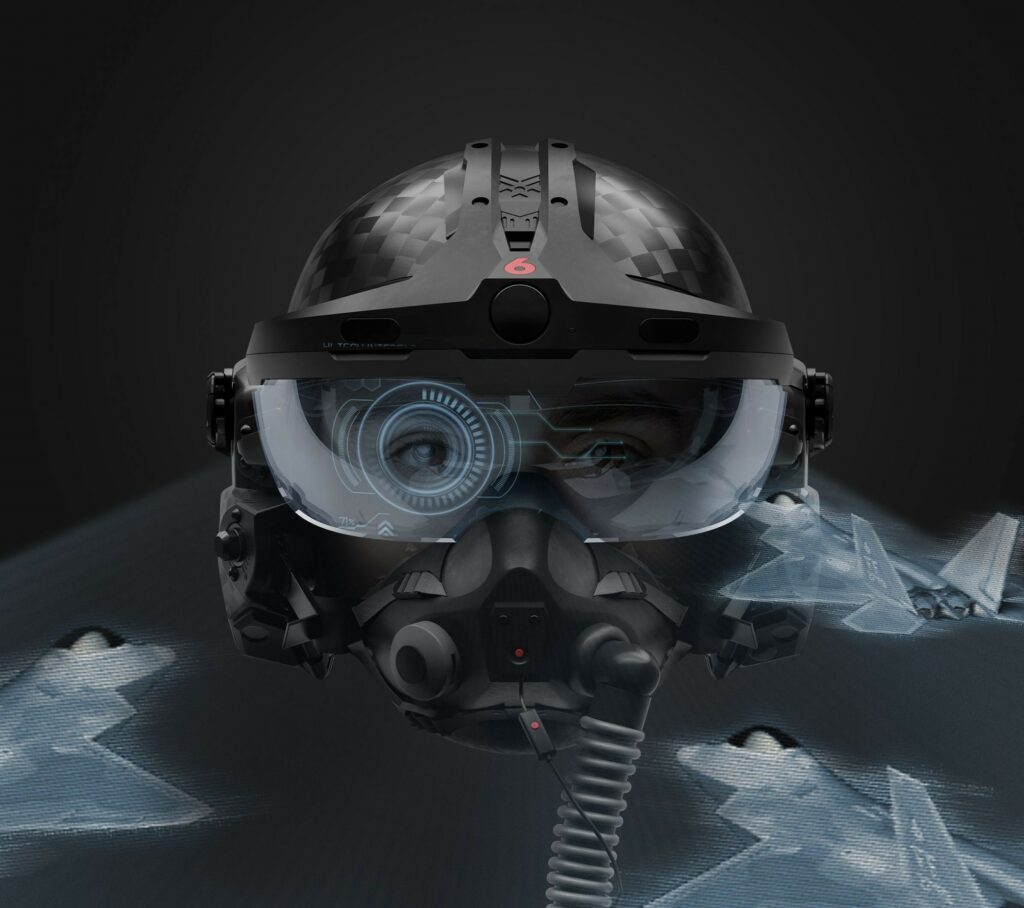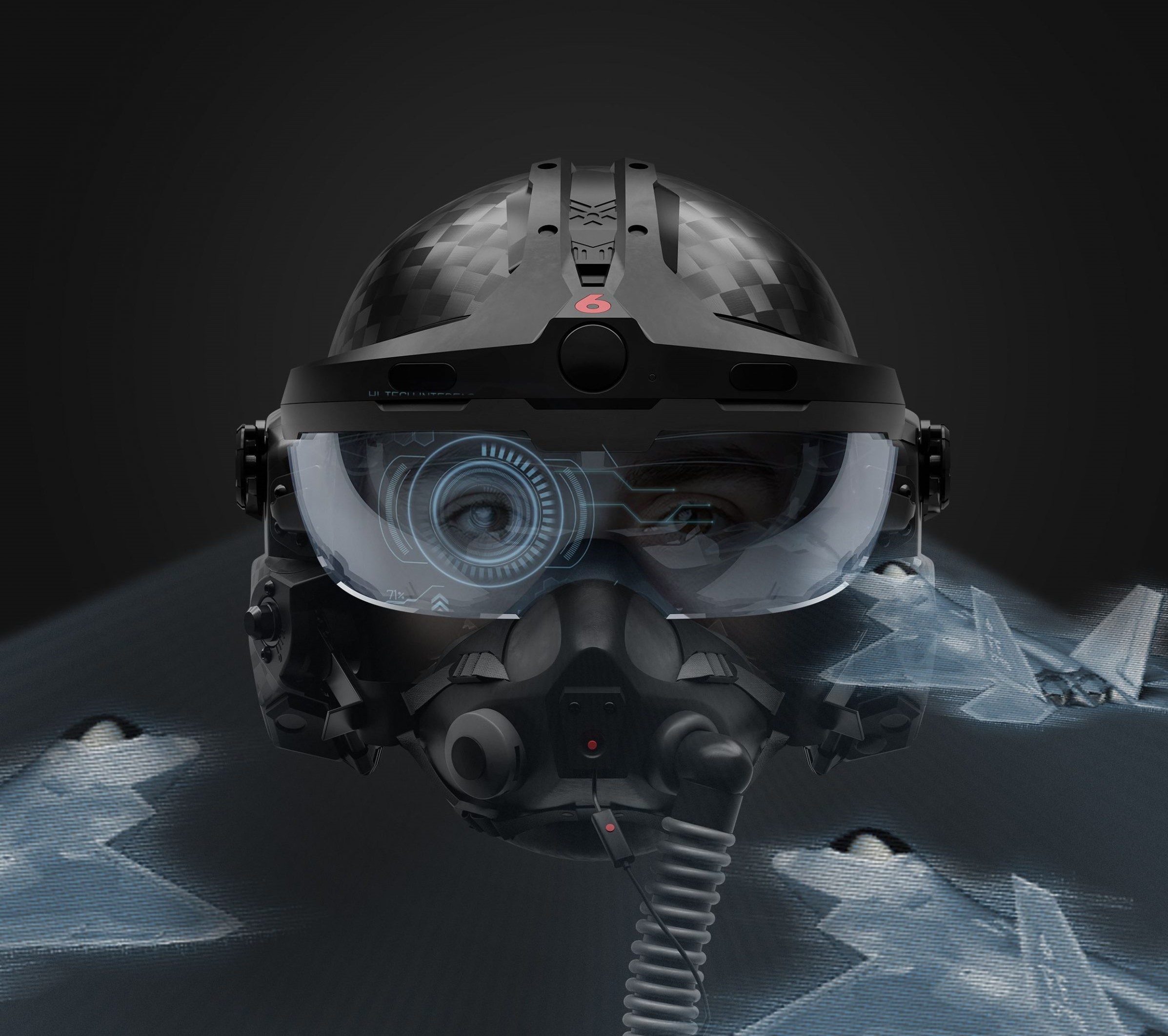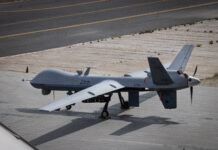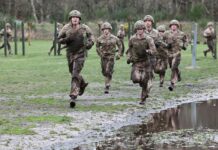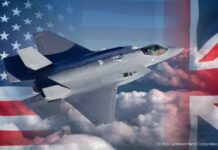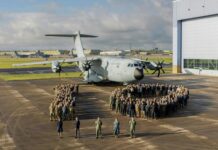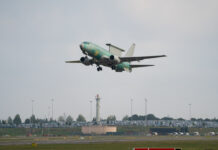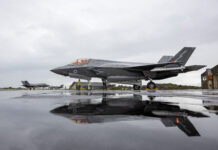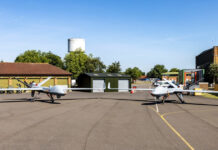The UK Royal Air Force (RAF), in partnership with BAE Systems and US company Red 6, announced on 19 July 2024 that it will trial an in-flight demonstration of Red 6’s Advanced Tactical Augmented Reality System (ATARS) on a Hawk T Mk2 (T2) advanced jet trainer later this year.
ATARS enables pilots flying real training missions to identify, engage and defeat virtual adversaries programmed to act and react as a pilot would experience in hostile combat and co-operate with synthetic support aircraft while airborne.
The technology allows the pilot of a Hawk flying over the UK to see through their visor virtual aircraft, which could be another Hawk flying alongside or adversary fighters displaying hostile intent.
Such synthetic training offers the opportunity to not only reduce the demand for live assets but drives fuel efficiencies and achieves more training per flying hour for the trainee.
The demonstration, which will take place at RAF Valley, where a candidate aircraft has already been identified, is intended to assist the RAF in assessing and analysing the interoperability and capability of this new technology as it considers whether AR should form part of its future flight training strategy.
Speaking at the Royal International Air Tattoo (RIAT) at RAF Fairford on 19 July, Group Caption Ryan Morris, the RAF’s assistant head of plans for military flying training, explained that the RAF has been working with Red 6 for the last eight months but had that day signed off on a second part of its contract with the company that will culminate with a concept demonstration.
The aim of the work, he said, would be “to understand whether the ATARS system will integrate with the Hawk, how it will integrate with our training system, and what sort of benefit use case we can get”.
Outlining the key benefits of the system, Group Capt Morris said that ATARS “means that actually I can train pilots faster to what we do at the moment, I can put more virtual assets up when I’ve got a limited assets available, we can do more per aircraft serial … and actually we can develop our training faster using the artificial intelligence side of things as well, which means that we’ll learn from our own tactics and work out what we might do to train differently.
“It’s early stages, but it’s where we are,” he added. “We’re looking to do a concept demonstration flying on board a Hawk by October this year.”
Daniel Robinson, the CEO of Red 6, explained that, in order to work, ATARS needs to track where the pilot is looking, both in relation to the aircraft and also the real world outside the cockpit. For this, Red 6 has developed a proprietary optical tracking system that will be installed in the Hawk. Robinson described this as “an incredibly exciting technology that we believe will not just transform head tracking for augmented reality and make it realisable, but it will transform the accuracy and latency for helmet-mounted queueing as well, so we’re really excited to demonstrate that as part of the integration.”
Following the concept demonstration, and in light of the recently announced UK strategic defence review, Group Capt Morris said that the RAF is likely to make a decision on moving forward with ATARS “probably late next year”, which Robinson added ties in with Red 6’s plans as its military-standard ATARS product will be finished by the third quarter of 2025.
What will be fitted in the Hawk will effectively be an advanced prototype of this product.
In recent years the RAF has had issues with not being able to generate the amount of flight training hours it requires, forcing the air force to contract out some pilot training. This situation was exacerbated in 2022 when an engine issue with the Hawk T2, which even led to the Hawk T2 fleet being grounded for a short period in early 2023, further limited the amount of flight training hours available.
Addressing this situation, Group Capt Morris stated, “With the initiatives that we’ve put in place for fast jet transformation, which is improved synthetics that we’ve got on the ground as well as Red 6 in the future, we believe that’s a plan that can get us to deliver enough pilots for the air force organically.
“What this does,” added, “is it enables us to get more people through the training system faster, while still making sure that ab initio pilots have exactly the same number of hours, because we don’t want to do is take hours away from those brand new training pilots.”
On the Red 6 website ATARS is described as “a multi-node, all-domain, augmented- reality system that enables a complete LVC [live, virtual and constructive] ecosystem for multiple users, from beyond visual range to within visual range in dynamic environments”.
“Utilizing an extremely low-latency protocol that is waveform and network agnostic, ATARS delivers the high-speed data passage necessary to create a seamless, multi-player, augmented-reality experience viewed through a full-colour, wide-field-of-view and high-resolution display,” Red 6 states.
The company’s Enhanced Visual Environment (EVE) helmet is said to offer a brightness level of 18,000 nits and a latency of 10 ms.
